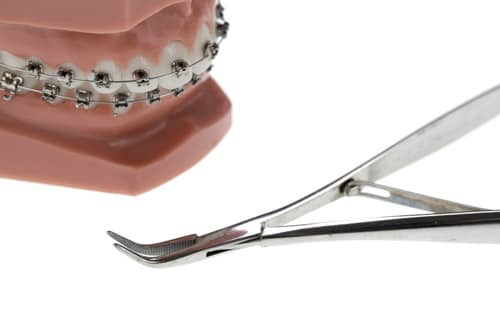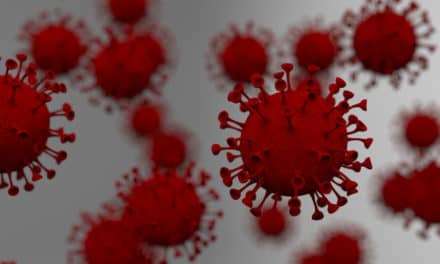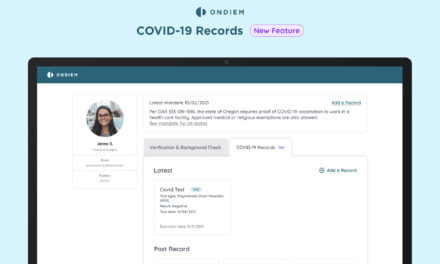Practical, actionable advice on how to improve practice efficiency: That’s what every orthodontic practice wants. And that’s what Hu-Friedy has set out to provide with its Practice Efficiency Playbook.
The Playbook, which is available as a free download on the Hu-Friedy website, provides readers with behind-the-scenes moves the practices can make to positively impact productivity. Covering a range of topics—from patient engagement, team alignment, and business process, to technology and clinical workflow optimization—the Playbook offers the advice of 15 dental industry experts representing a wide range of specialties—dentists, orthodontists, oral surgeons, dental assistants, dental hygienists, office managers, and consultants. Their tips and recommendations are designed to tackle the daily challenges facing the common practice.
Orthodontic Products spoke to Edward Lin, DDS, MS, one of the Playbook’s contributors. An orthodontist in private practice in Green Bay, Wis, Lin talked about how the Playbook can benefit a practice and more specifically about his contribution, which focuses on the importance of an instrument management system.

Lin: I have always been a systems person and firmly believe that if systems are set up and implemented correctly, it will always lead to improved efficiencies. I am also a firm believer in modeling after best practices. This helps to reduce the potential for repeated mistakes and to transform one’s practice with a systematic approach.
OP: What does the Playbook cover?
Lin: The Playbook covers several important factors related to having a successful dental practice from sound practice management with regard to building a great team to efficient scheduling. In addition, it covers how to create a strong marketing brand and patient communication systems which lend themselves to building a strong recall system and a loyal clientele. The Playbook also covers investing in your team and practice with education and advanced technologies with a focus on continuous improvement, and creating efficient business, management, and clinical systems which will ultimately lead to increased productivity and increased revenue.
OP: Your contribution to the book focuses on the need for a strong instrument management system in the practice. Why is such a system necessary?
Lin: A strong instrument management system (IMS) is imperative for any clinical practice to ensure the highest standards of patient and employee safety. We want our patients and their families to see the safety and infection prevention protocols that are followed with every patient and to be confident that they are receiving the highest quality care and protection for their families. Having a strong IMS in place with an infection prevention plan is the only way that I know of to properly accomplish this goal.
OP: What defines a “strong” instrument management system?
Lin: I think that a strong IMS needs to be “customized” for each practice. There is no one size fits all model. Each clinician has certain preferences and practices differently. I know this because I have worked with several different doctors over the past 20 years in private practice settings. To create a “tailored” IMS solution for each dental practice, the first step is with having an orientation meeting to discuss and determine the priorities for the doctors, clinical assistants, hygienists, and sterilization technicians. This will then lead to a determination of what mutually agreed upon instruments are necessary in a cassette, types of cassettes, and the size of the cassettes.
As an orthodontic practice, we only need two types of cassettes—retie and debond cassettes. The size of the cassettes and the number of patients seen per day then determine the size and number of autoclaves needed in the practice. Our practices believe firmly in steam sterilization versus dry heat because of the improved speed which ultimately leads to increased clinical efficiency.
OP: What are some of the common problems in a practice’s instrument management system?
Lin: First, not having a central sterilization/IMS coordinator in place for management of the IMS. This leads to disorganization and breakdown of the established systems. In my opinion, this is an integral position for any dental practice to ensure that the systems are being followed correctly. The second problem I see is training of clinical assistants to ensure they understand the guidelines and protocols of the IMS. And third, clinical assistants not following the IMS guidelines and protocols.
The solution to all of these problems is having a central sterilization/IMS coordinator in the practice. The coordinator can train all clinical personnel and get everyone to understand the importance of having a strong IMS system. In addition, having a coordinator will ensure that all guidelines and protocols are being followed correctly. If not followed correctly, there needs to be a system put into place to address and document these violations.
OP: What features of your own instrument management system have been key to your practice’s efficiency?
Lin: We have a phenomenal central sterilization/IMS coordinator, Nancy Figgins. She runs a very tight ship in our clinics, is incredibly detail-orientated and very well organized. She helps to ensure that everyone on our clinical team understands the importance of following OSHA and CDC guidelines and protocols. In addition, everyone understands the financial investment which the doctors have made in our clinical instruments and the importance of taking proper care of these instruments. Nancy manages all of this and truly helps our clinics to run very efficiently.
OP: What is the orthodontist’s role in the implementation of a strong instrument management system?
Lin: In a private practice setting, the orthodontist is the owner/boss. As a result, the orthodontist is ultimately the one responsible for ensuring that the IMS is set up correctly. The orthodontist is the one who will need to finalize the IMS system which will also the determine the budget. I am a firm believer in building a great team and delegating this responsibility to someone who has the talent and skill set to manage this correctly.
The central sterilization/IMS coordinator is the one who will ultimately be responsible for managing things. That person needs to be given the responsibility to manage the IMS system and to be the one to bring to the orthodontist’s attention any issues that may arise and to make recommendations on how to address them. The coordinator is ultimately also responsible for training the clinical team and ensuring that everyone is following the established systems.
OP: What impact can a practice expect with the implementation of a strong instrument management system?
Lin: A strong IMS is an imperative and great investment in your practice. It takes a considerable amount of planning for any practice to properly set up a strong IMS; and there is a financial investment that must be made. We believe in investing in high-end products which is why we have partnered up with Hu-Friedy. The quality of their instruments is outstanding as is their warranty. Having a strong IMS in place is imperative for organization, clinical efficiency, safety for employees and patients, and protection of your instruments and equipment. This is ultimately a win-win for the practice, its employees, and patients. OP











